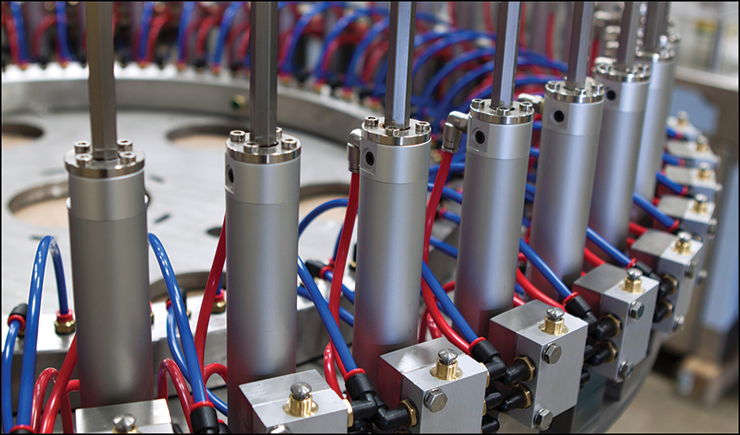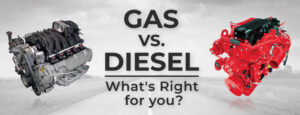Under the hood, an actuator motor permits your vehicle to run smoothly, from the throttle to the DAS system. While there are multiple actuators, our concentration today is on pneumatic actuators. Are you a curious auto proprietor and desire to understand what a pneumatic actuator is and how it functions? In this article, we will wrap up those bases. We will also discuss the functions of pneumatic actuators in cars and their benefits.
What Is a Pneumatic Actuator?
A pneumatic actuator is an instrument that converts the power of air into movement. It uses compressed air and creates mechanical movement in the system.
Pneumatic actuator types used in any situation depends on the movement. Its types are based on this classification: linear and rotary.
Rotary delivers motion around an axis, while the linear offers motion(in a straight line). The subtypes are based on their design and operation principles.
How Does a Pneumatic Actuator Work?
Pneumatic actuators work based on Pascal’s principle, which states that pressure applied to a confined fluid spreads in all directions. Only, in this case, we’re dealing with air.
This means that when compressed air is introduced into one end of a cylinder or chamber that holds a part, that part will move in the direction with an equal amount of force.
The amount of force which a pneumatic actuator can generate depends on its size, shape, diameter of the cylinder it’s using, and other factors. The amount of air entering the cylinder can be controlled using valves; manual valves or proportional valves.
These valves control not just the airflow but also determine its direction, volume and timing. The valves also make dual-acting modes of operation of actuators possible. There are two modes of operation for actuators. Single acting and double acting.
In acting actuators, the air pressure is used to move the element in one direction while relying on either spring force or gravity to restore it to its original position.
Double-acting pneumatic actuators use air pressure to move the element in both directions and can achieve continuous or reciprocating motion.
Functions of Pneumatic Actuators in Cars
Pneumatic actuators serve different operations in vehicles that improve their implementation and amenity. Some of the functions of pneumatic actuators in automobiles are:
Controlling the Throttle
The throttle plays a role in managing the flow of air and fuel into the engine. To control the opening and closing of the throttle valve, pneumatic actuators are used.
These actuators respond to signals from either the accelerator pedal or the electronic control unit (ECU). By employing throttle control we enhance engine responsiveness, improve fuel efficiency and reduce emissions.
Directing Airflow in the Climate Control System
The climate control system in a car is responsible for keeping the temperature and humidity at a level. It uses actuators to regulate airflow by adjusting flaps or louvres in vents and ducts. This pneumatic climate control system greatly enhances passenger comfort and well-being.
Operating Power Seats and Liftgates
Power seats are seats that can be adjusted using controls such as switches or buttons. Pneumatic actuators play a role in operating these power seats, providing both linear and rotary motion. The integration of pneumatic actuators into power seats and liftgates enhances accessibility. It adds convenience to their functionality.
Adjusting Valve Timing
Engine valve timing refers to the coordination between the piston movement and the opening/closing of engine valves.
To achieve this, pneumatic actuators are employed to adjust valve timing by modifying the position or phasing of the camshaft. The use of pneumatic valve timing enhances engine performance, fuel efficiency. It also reduces emissions.
Enabling Advanced Driver Assistance Systems (Adas)
ADAS refers to systems designed to support drivers in driving tasks, including steering, braking, accelerating and parking.
To improve ADAS functionality, pneumatic actuators are used to offer feedback or intervention to the steering wheel brake pedal or accelerator pedal. The integration of ADAS contributes to safety and overall driving comfort.
Advantages of Pneumatic Actuators in Cars Over Other Alternatives
Pneumatic actuators have many advantages over other types of actuators, such as hydraulic and electric actuators. Some of the advantages of pneumatic actuators in cars are:
High speed
Pneumatic actuators have the ability to achieve speeds and acceleration thanks to the compressible nature of air. Additionally they can swiftly adapt to changes in pressure and flow thereby enhancing the responsiveness and agility of vehicles.
Low cost
Pneumatic actuators are more affordable compared to hydraulic actuators. They have a design and construction that require little maintenance and repairs in your car and use air as a readily available medium.
The cost-effective nature of pneumatic actuators helps to decrease both the investment and ongoing operational costs of cars.
Simple design
Pneumatic actuators are known for their simple design and ease of use, making them a breeze to install, operate and manage.
Unlike hydraulic actuators, pneumatic ones have components, less wiring and overall less complexity. Their simplicity in design contributes to improved reliability and efficiency in applications.
Easy maintenance
Pneumatic actuators demand less upkeep and repairs compared to hydraulic actuators. They experience wear and tear, leakage and corrosion less often.
Pneumatic actuators can be effortlessly cleaned, lubricated and replaced too. This hassle-free maintenance of pneumatic actuators contributes to the longevity and optimal performance of vehicles.
Safety
Pneumatic actuators offer a level of safety compared to hydraulic actuators. Unlike other actuators, pneumatic ones pose a reduced risk of fire, explosions or electrocution. Pneumatic actuators also have a lesser likelihood of causing contamination, pollution or environmental damage.
Moreover, pneumatic actuators can be equipped with safety valves or devices to prevent any overpressure or malfunctioning. These safety measures ensure the protection of drivers, passengers and the surrounding environment.
Reliability
Pneumatic actuators offer reliability compared to hydraulic actuators. They have a small failure rate, resulting in minimal interference.
Additionally, pneumatic actuators are capable of functioning in challenging environments, with high temperatures, humidity or vibrations. The reliability of actuators plays a role in ensuring the smooth operation and optimal performance of vehicles.
Environmental friendliness
Pneumatic actuators offer an alternative compared to hydraulic actuators. They utilise air as an renewable medium resulting in no emissions or waste.
Additionally pneumatic actuators are more energy efficient. They require less resources to manufacture than their electric and hydraulic counterparts. This environmentally friendly aspect of actuators greatly contributes to the sustainability and eco friendliness of automobiles.
Conclusion
Pneumatic actuators use the power of air and Pascal’s principle to deliver power that drives various components in your car. When you’re out on the road keep in mind that there are actuators working quietly in the background to ensure your journey is comfortable and efficient.
Whether you’re adjusting your seats, enjoying climate control or taking advantage of driver assistance systems, these incredible devices play a crucial role in enhancing your driving experience.
FAQs Regarding Pneumatic Actuators in Cars
Q1: What are the benefits of using pneumatic actuators in vehicles?
Fast response times
High efficiency
Low maintenance costs
Low-maintenance and cost-effective.
Q2: How are pneumatic actuators utilised in cars?
Suspension: Improve ride comfort and handling.
Brakes: Provide more responsive and powerful braking.
Engine management: Control turbocharger, wastegate, and EGR valve.
Safety features: Power safety to airbags, pre-tensioners, and seat belt height adjusters.
Q3: Are pneumatic actuators only found in luxury cars?
While they are more commonly associated with luxury and high-end vehicles, some mid-range and budget cars may offer basic pneumatic suspension options or features.
Q4: Do pneumatic actuators have any environmental impact?
Pneumatic suspensions require energy to compress and maintain the air supply. They can contribute to a vehicle’s overall weight, potentially reduce fuel efficiency, and aim to mitigate these impacts.




